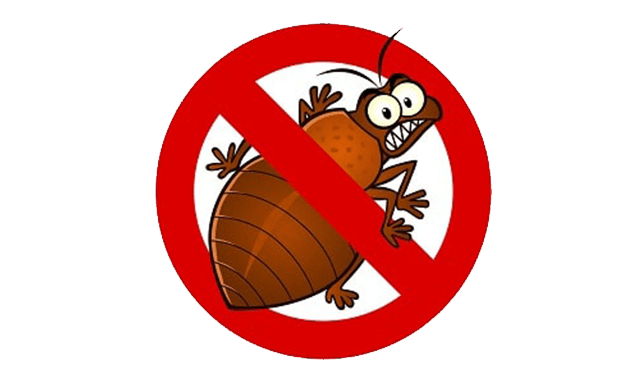
Я уточню, что сейчас наша семья находится на отдыхе в другой стране. Может, это как-то связано. Сейчас мы активно обрабатываем укусы средствами с антигистаминным, противозудным эффектом. Но это не выход, т. к. полностью снять симптомы не удается. Ноги, руки выглядят настораживающе, пока ухудшений ни у кого из нас нет. Обращаться в медучреждение, даже имея страховку, не хотелось бы, пытаюсь решить проблему своими силами. Начинаю думать, что на нас напали какие-то другие насекомые. Возможно, существуют разные виды клопов. Скажите, права ли я в своих догадках. Если это все же паразиты, как мне проверить такую теорию. С уважением, Виктория.
The author of the portal answers the question:
But first we should know what kind of bed bugs there are, because not all of them are interested in mammalian blood. Of the most dangerous, I will note the triatomine bug, the stinging bug. Most parasites have an insufficiently powerful mouthpiece, which determines the food habits - such bed bugs are saturated with the juice of plants, fruits, the biological fluid of other insects. They are not dangerous to you, so it will be much easier to figure out who is biting. I would recommend contacting a local medical professional to rule out the possibility of poisonous bites.
In my material below, you will learn about all the varieties of bed bugs around us.
What bed bugs are. What they look like. What class do they belong to. Description, structure of the class
Insects are united by the order of semi-hardwings. Classification:
- kingdom - animals;
- type - arthropods;
- suborder - bedbugs.
Pests belong to insects with an incomplete development (transformation) cycle. This means that they skip one of the stages of formation (in particular, pupation) and proceed directly to the next one: the larva emerges from the eggs. There are about 40,000 species. They are subdivided into 50 families. Each species has characteristic external features that allow them to be distinguished from the others. Garden species have a bright coloration, water and indoor species have a discreet appearance.
A number of common features common to most bed bugs are noted:
- 3 pairs of legs;
- 1 pair of tendrils;
- hard shell;
- oval body shape.
Many bedbug species have wings and can travel long distances, while others (the smallest) fly in the wind. There are also some that have no wings or have reduced growths. Body size of creatures of different species also varies in each case. There are individuals less than 1 mm long and more than 15 cm. The oral apparatus is of the stabbing-sucking type, and the proboscis is a noticeable part.
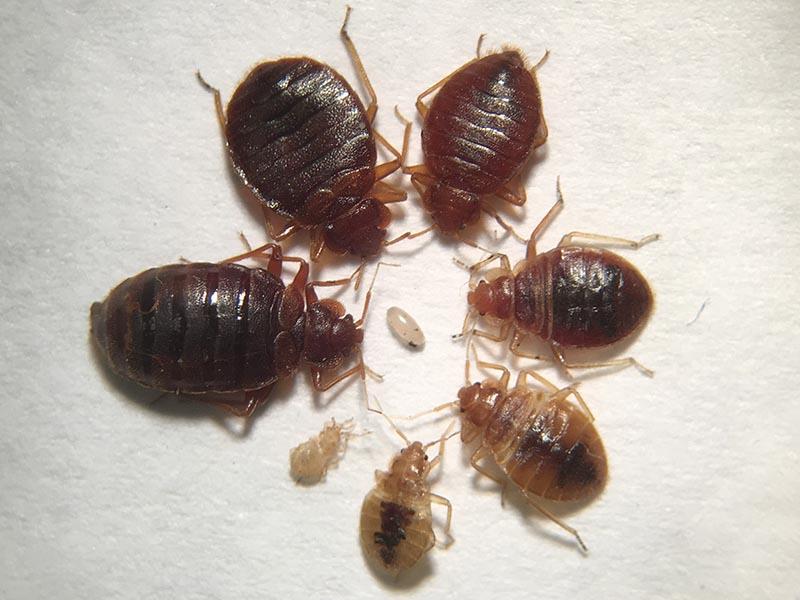
The bed bug is a major irritant to humans. Where does it come from. Close-up photos of adults, larvae, eggs, bed bugs' nests
These Insects are parasites - they feed on the blood of warm-blooded creatures. They often live in people's homes and make nest-like nests (an accumulation of insects, eggs, remains of chitinous covers). The pests are 6-8 mm long, their coloration varies (different shades of brown). The back is segmented.
The body may become rounded, stretched out in length - this happens after eating. The parasite appears most often from neighbors (in an apartment). Such insects do not crawl into a private house from the street, because they do not leave their habitat, they are carried along with things.
As it exists, there is an unpleasant odor in the apartment.
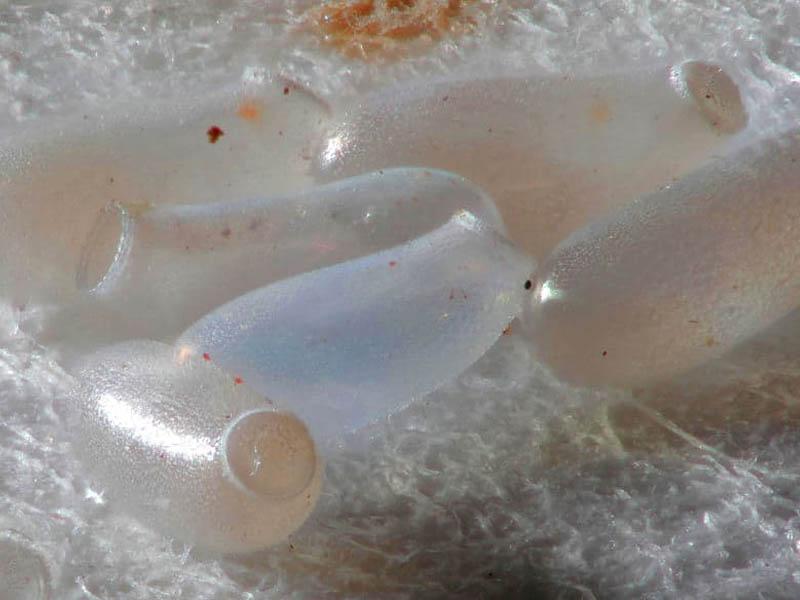
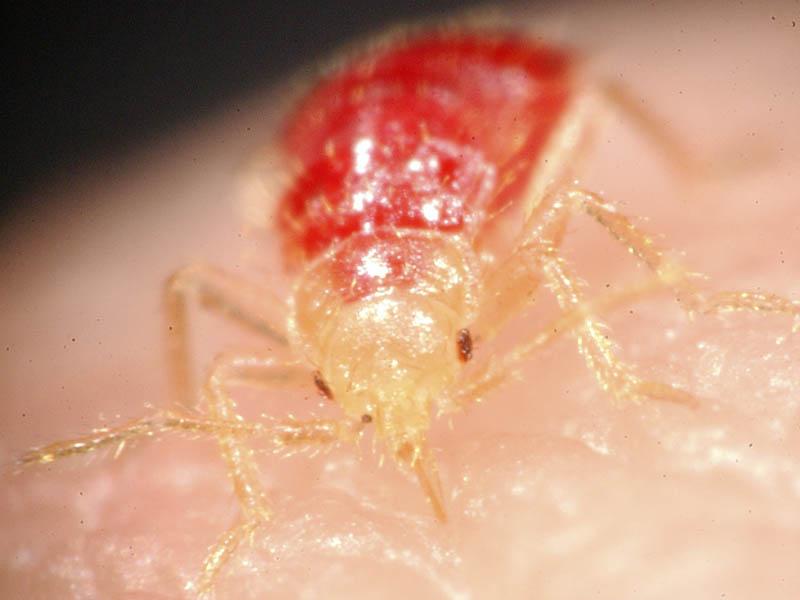
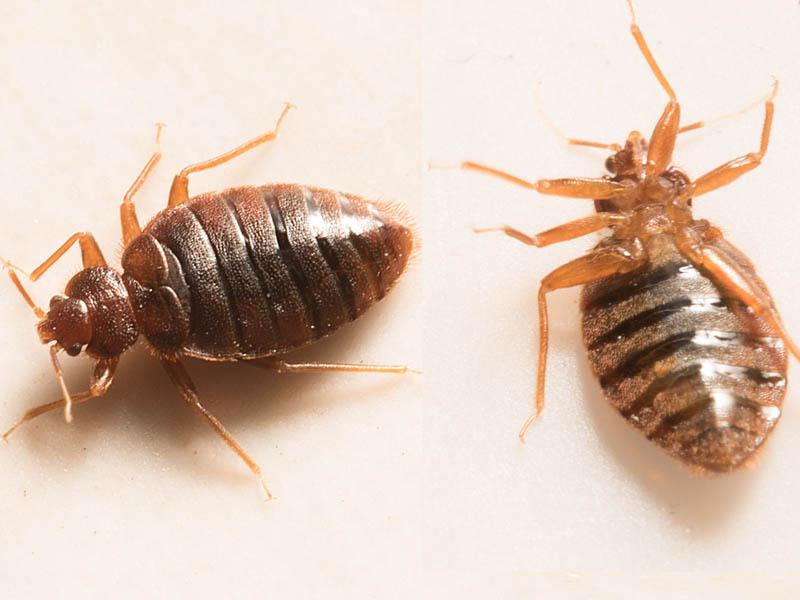
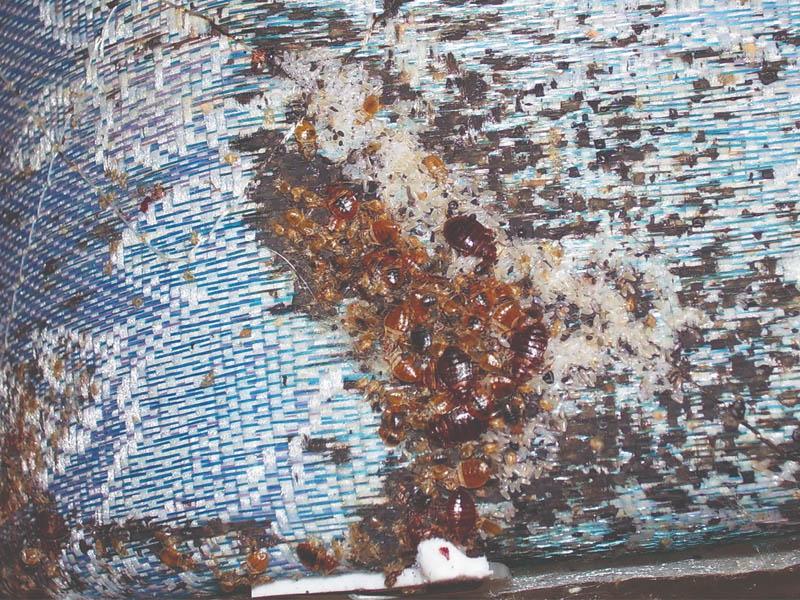
Types of bed bugs
There are quite a few varieties of these parasites. However, only a few live in people's homes. The rest attack animals, but can also bite people. It is difficult to distinguish them from each other by their outward appearance.
Cimex lectularius. Photo
It is a typical representative of domestic parasites. Other names are: flatworm, furniture mite. The female is larger than the male and has a rounded body. Representatives of this species are called bedworms, because they live directly near the human sleeping place.
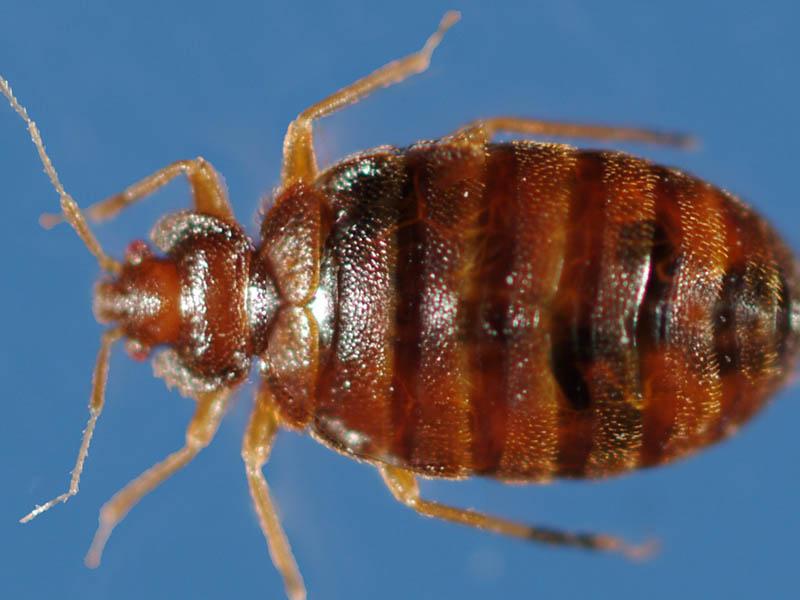
Cimex adjunctus. Photo
Representatives of this species are also called white. They have microscopic light-colored hairs on their heads. They live mostly in North America and are usually found in attics and other places where bats can live. They are much less common. attack people.
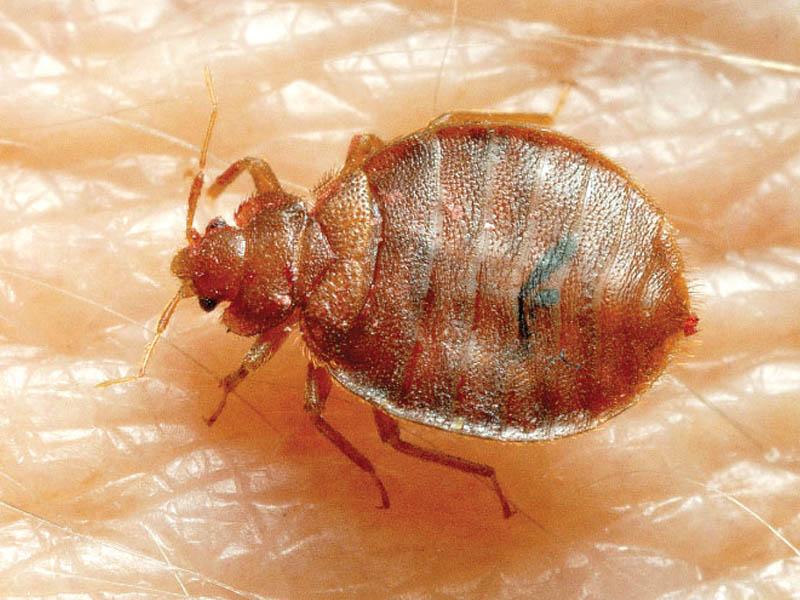
Cimex hemipterus. Photo
It's a tropical bedfellow. bedbug. Externally, it differs almost nothing from its brethren Cimex lectularius. The difference between the parasites can be seen only under close examination (with a microscope). Cimex hemipterus has become frequent in Russia in recent years. This species bedbugs inhabits regions where Cimex lectularius is absent.
It is noted that such parasites are not susceptible to insecticides that can destroy Cimex lectularius.
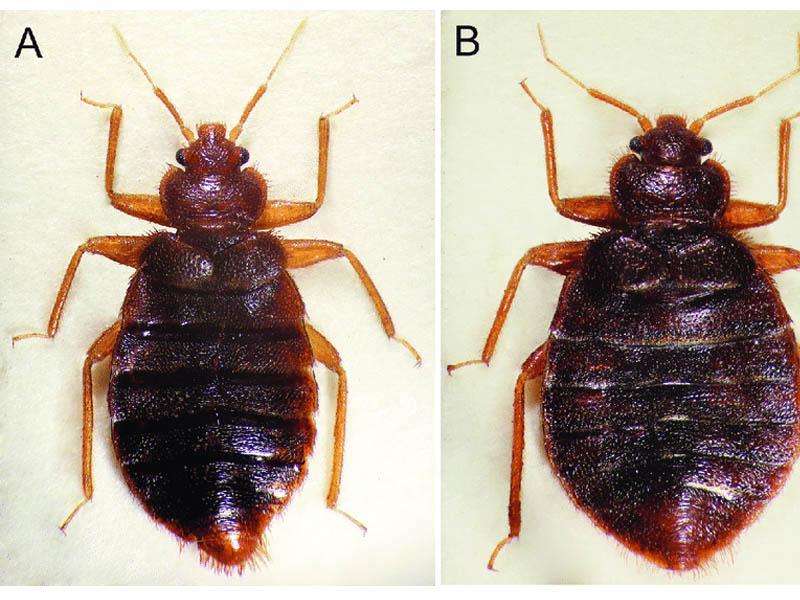
Oeciacus. Photo
These are representatives of the swallowtails. They are Insects are found in the territory of Russia. They attack other warm-blooded species, but their eating habits change temporarily when the parasites experience an acute deficit in the blood portion. The same group includes. Cimex pipistrelli.
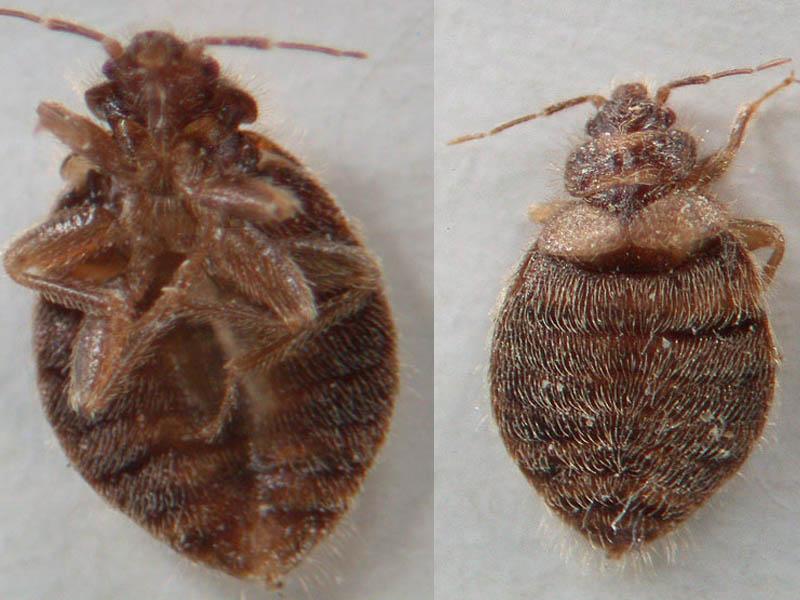
Bed bugs are natural helpers
Such Insects feed on other creatures. To satiate themselves, they attack garden or garden pests, which allows them to control the numbers of the latter. For this reason, insects of this group are considered assistants of humans.
The bug Podius maculiventris eats the Colorado potato beetle
These are individuals of the family of true shieldworms, so they have all the features: a wide pentagonal shell of green color, polydentate tendrils, the length of the pests is 11 mm, but females are larger. The insect destroys many varieties of congeners (about 90 species) on the site, most of which harm agricultural crops. Because of this, Podius maculiventris is considered beneficial.
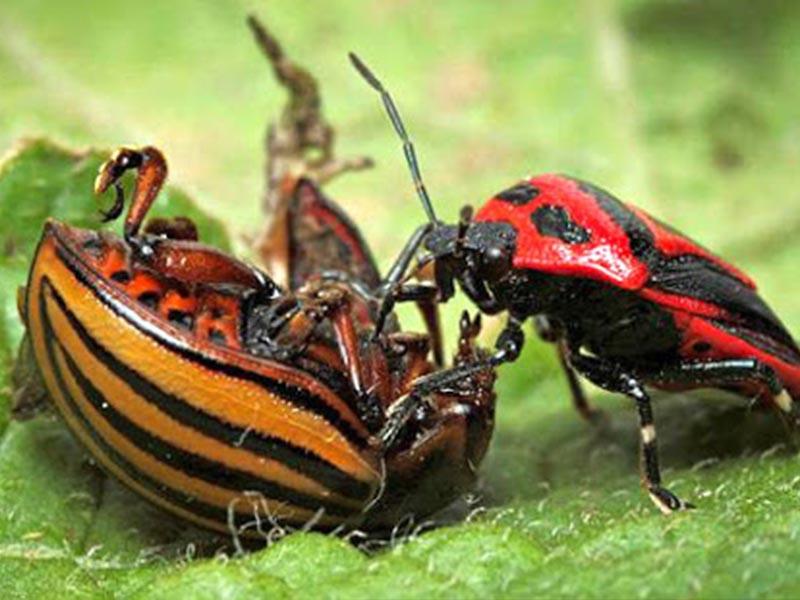
Anthocoris nemorum
Externally, these pests differ significantly from their brethren of other families - they are characterized by marbled coloration (chitinous covers in white and light brown tones). The body is narrow, the antennae are much longer, and the head and thorax are black.
Street bugs of this species feed on small pests: aphids, cicadas, thrips, and other insects.
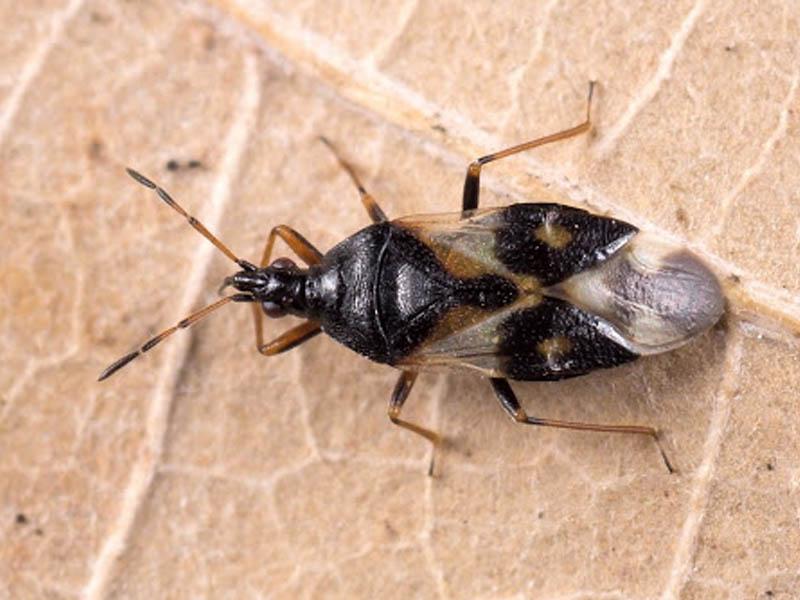
Predatory bugs of the genus Orius and Anthocoris
They are characterized by their small size (not more than 3 mm). They kill pests of different crops, including, floral. Such insects can be grown under artificial conditions to control thrips, aphids, coccids, and whiteflies. In addition, pollen is used as a feed. But control of Orius and Anthocoris insects is also required, and the area is taken into account (not more than 2 individuals per 1 m sq. m. is recommended).
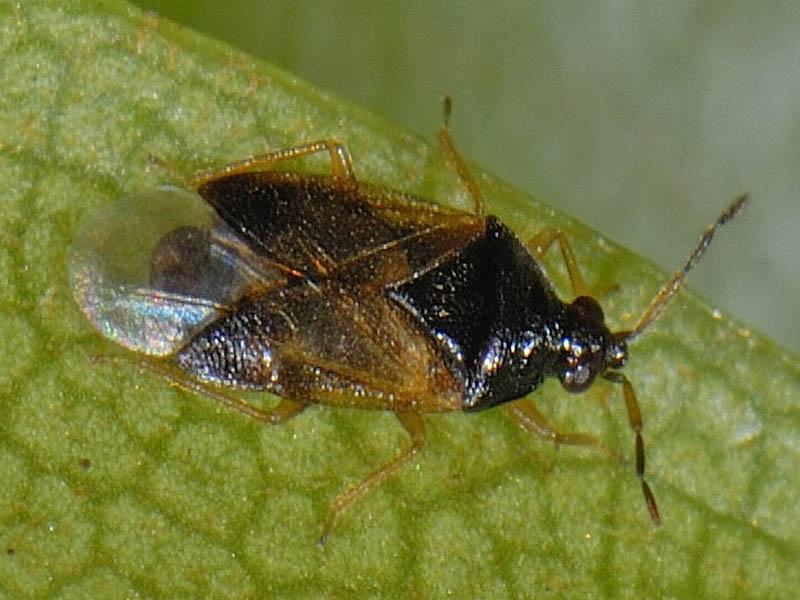
Predator family (Reduviidae)
The members of this group have insects are not characteristic features of bed bugs. They have a large body, long antennae, the coloration is often inconspicuous (black, brown), less often - with inclusions of bright dots, spots (green, yellow, red, orange). Another significant difference is the constriction of the pronotum, which divides it into a narrower and wider part. This group includes different bedbugs, species: predators, parasites. The former feed on insects, the latter on blood. Predators are more common in Europe, America, and Africa.
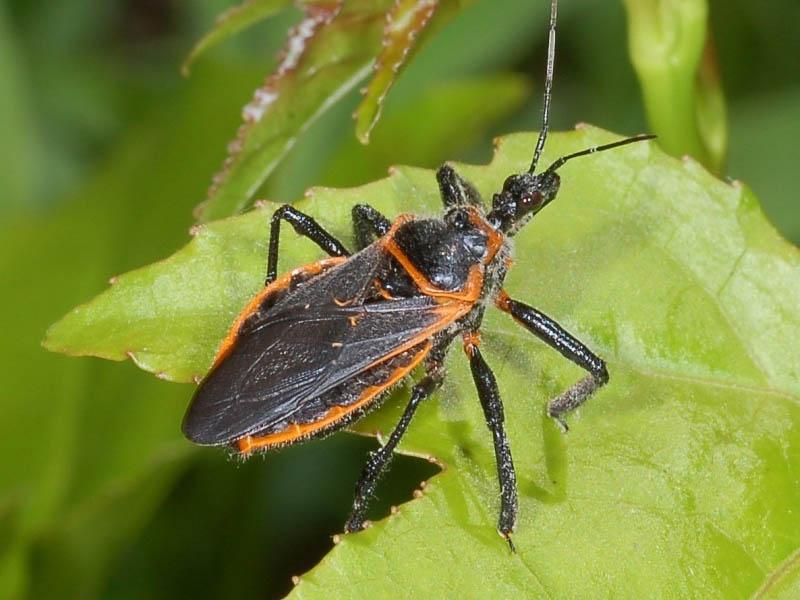
Macrolophus (family Miridae)
These street bugs are represented by different species, the body length varies from 2 to 11 mm. The shape of the parasite varies: oval or more rounded. The outer covers are less rigid than those of other species. There are many plant-eating bugs among gadflies. Some are zoophytophagous and also recognize animal food.
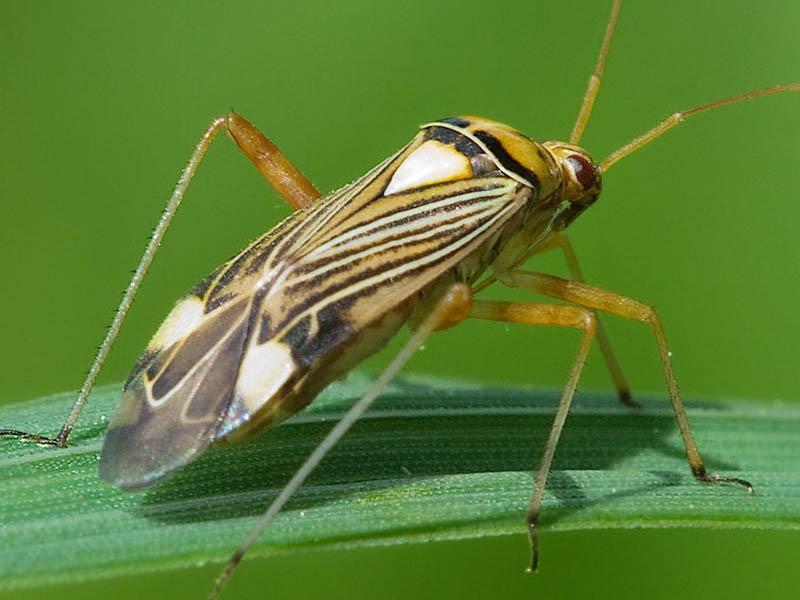
Parasitic pests
They are also called bloodsuckers. They feed on the blood of living creatures, mostly humans. Many species affect small and large animals and birds.
House bug, aka bed bug
Parasite drinks blood man. It settles nearby, tends to make a nest inside the couch, bed, so many bites are found on the body in the morning. This is a domestic bedbug, it is rarely found in the street and usually not on its own. The main danger is the risk of developing allergies after contact with it, because at home a significant amount of excrement, particles of chitinous covers and other products of life activity of parasites get into the air.
When bitten, a special secret gets into the human body, which also causes a negative reaction.
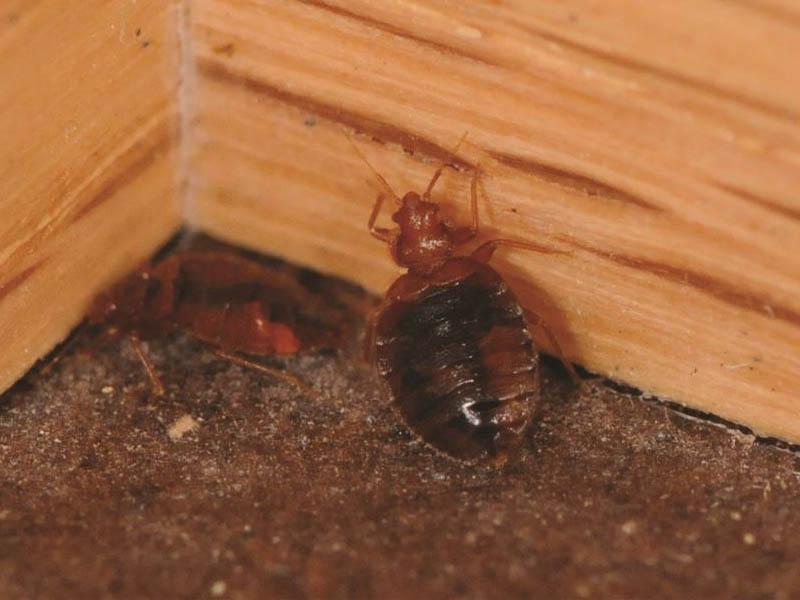
Kissing bug (triatom)
This is representative predators. The street bug, which feeds on blood. These insects attack people and their bites are accompanied by severe pain. The main danger is the risk of developing Chagas disease (resulting in death). Bed bugs are large, up to 3.5 cm in size. Depending on the species (130 in number), the body color varies from black to brown.
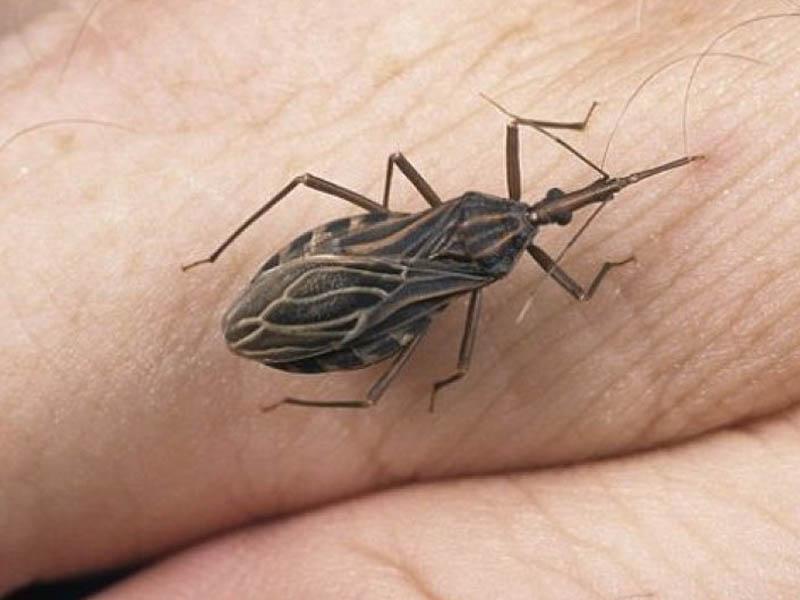
Pests of our beds
This group includes pests that live on plants, feed on the sap of plantings, and reproduce there. They do not occur in the home and can only get into a human dwelling by accident.
Pests of this species usually do not survive indoors, especially where there are no plants.
Cabbage bug
It is one of the most dangerous pests of the cruciferous family. Bed bugs make punctures in plant tissues, sucking out sap. These areas have necrotic spots (yellow in color). If severely infested, yields may be reduced. The name of the bug of this species is evidema. The body length is 1 cm, the coloration is bright, reminding something of the well-known soldier (black and red), but the pattern on the back is different.

Rapeseed bug
It is a representative of the Shieldworts family and is distinguished by its bright coloration (black and yellow). Its body length varies from 6 to 9 mm. It is found all over the world. It poses a real threat to plants of different species (mainly cruciferous crops). It infects radish, rutabaga, cabbage, turnip, etc. Larvae pose the greatest danger because they emerge from eggs immediately on leaves and begin to destroy them.
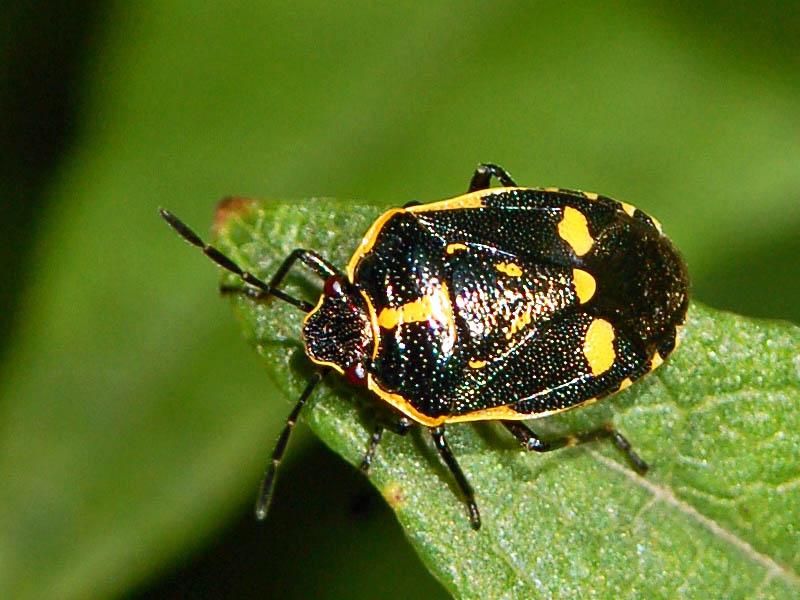
Light Green Shield
It is also known by its other name - arboreal. It belongs to the family of true scutellaria. It reaches 16 mm in length, the body shape resembles a shield (pentagonal), which influenced the name. Because of their coloring, these insects are difficult to see on plants (the shell is green). The pests lay their eggs here as well. They are also green in color. These species of bugs are found in the vegetable garden and plantations, they affect deciduous trees, shrubs.
They prefer raspberries, but can also eat grasses.
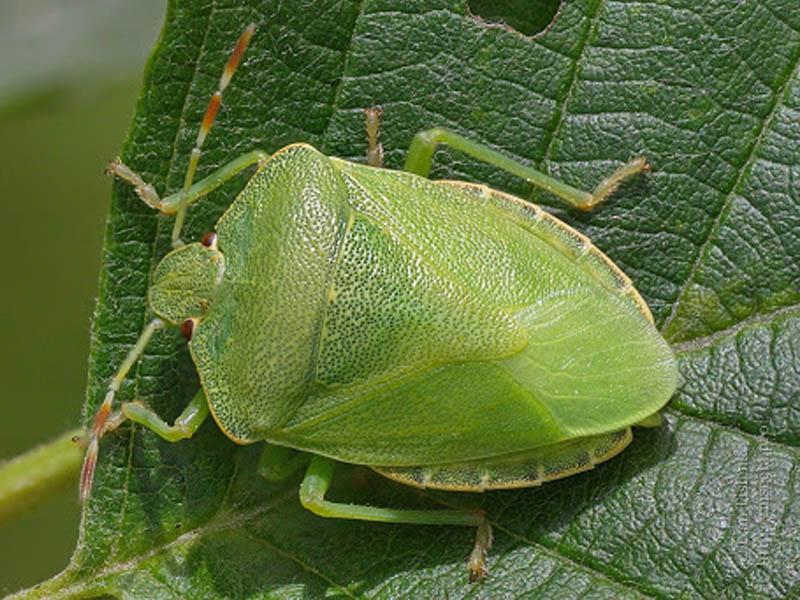
Linear Shield
Another name is graphosoma or Italian parasite (the coloring resembles the coloring of Vatican guardsmen's robes). The pest is 11 mm long. The body color is red, and longitudinal stripes are visible on the shield. The insect is found in Russia, as well as in regions throughout the middle belt and in Asia. The food source distinguishes these bugs from others - they feed on seeds of umbrella crops.
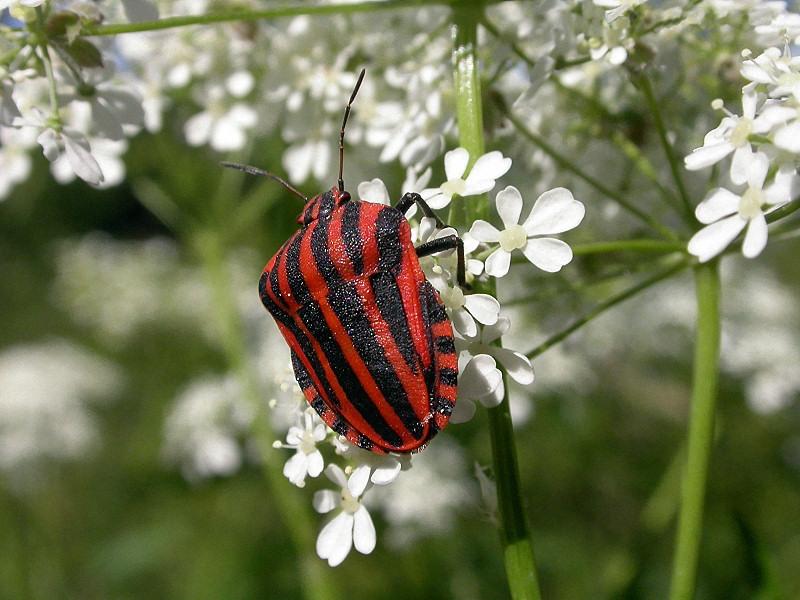
Naughty turtle
Such pests belong to another family, the Shielded Tortoises. They have many similarities with shielded turtles, such as body shape and length (11-13 mm). However, there are differences as well. The corners of the carapace are more rounded. They are flying insects; they may fly up to 200 km to change their places of wintering (forests and gardens) closer to their places of habitation in warm seasons (fields). They develop quickly, allowing 3 generations to appear in 1 season.
They feed on cereal plants.

Berry bug
It's a vivid pest, it is distinguished by its yellowish, brownish or reddish coloration; the scutellum is partially painted with black punctures on the sides. They have no distinct food habits, such insects are polyphagous, being found on fruit, berry, vegetable, and grain crops. They infest oil-bearing, technical, and even ornamental plants.

Harmless representatives
There are also non-hazardous insects of the semiparasitic group. They exist near predators and herbivores, but they do not crawl into people's homes either. For these reasons, no one fights such insects, the number of their colony can be reduced by accident if they are near the place of harassment.
Soldier Bug
This is representatives red-backed insects are medium-sized (about 11 mm), with a black-red color of their outer covers. The insects have eyes, which are also red in color. They can feed on other pests, as well as on plants, for which they have a proboscis, the visible part of a stab-sucking mouthpiece. They live on tree trunks, stumps, and in grass.
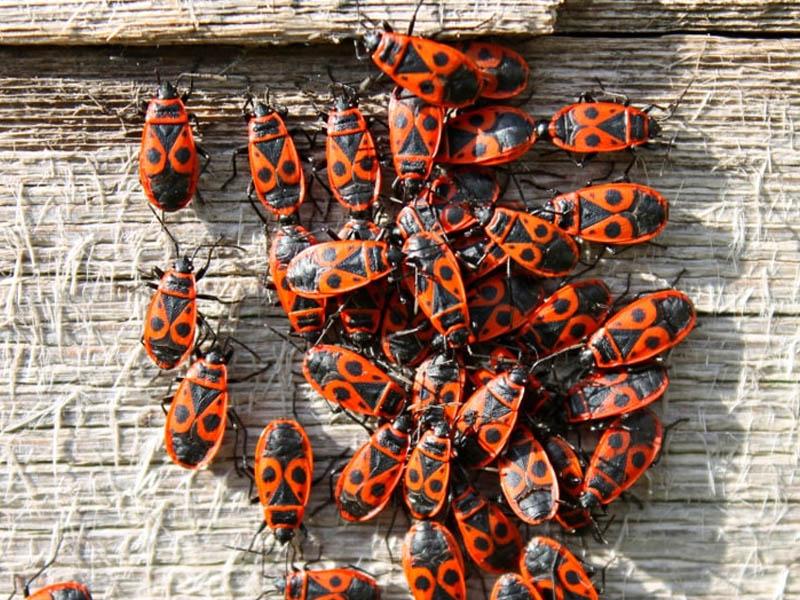
Alder bug
This is another kind of bedbug-tree shieldworm. The insects live on the alder tree and leave their offspring there. The peculiarity of these bugs is that females do not leave their nests and larvae until they have learned the skills of independent survival. These insects do not cause any harm to crops grown by humans.
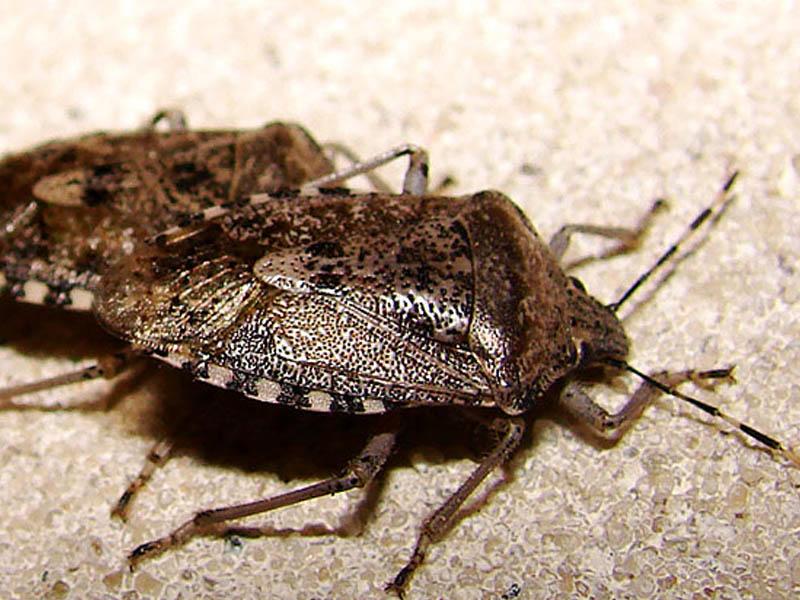
Bed bugs are water lovers
Representatives of this species prefer to live in an aquatic environment. Many of them have wings and can migrate between water bodies. Also a feature of this species is a large body size.
Water Scorpion
There are many species, but most are concentrated in tropical regions. Body length pest is 2.5 cm. It is characterized by large front limbs and a breathing tube on the end of its body. These bugs move little and spend most of their time in an ambush, which is why they are also called hunters. The excellent results in finding and catching the prey are provided not only by the grasping limbs, but also by the visual and sensory organs.
The bedbug feeds on larvae, tadpoles, and sometimes bites humans (a forced protective measure).

Belostoma gigantea
This insect is much larger than the others. Its body length reaches 17 cm, and it can be found in tropical and temperate regions. The front limbs, like those of the water scorpion, somewhat resemble claws. They provide a reliable grasp of the victim. It feeds on small creatures (insects, crustaceans, amphibians). It spends most of its time underwater, but also occurs on land, mostly during dispersal.
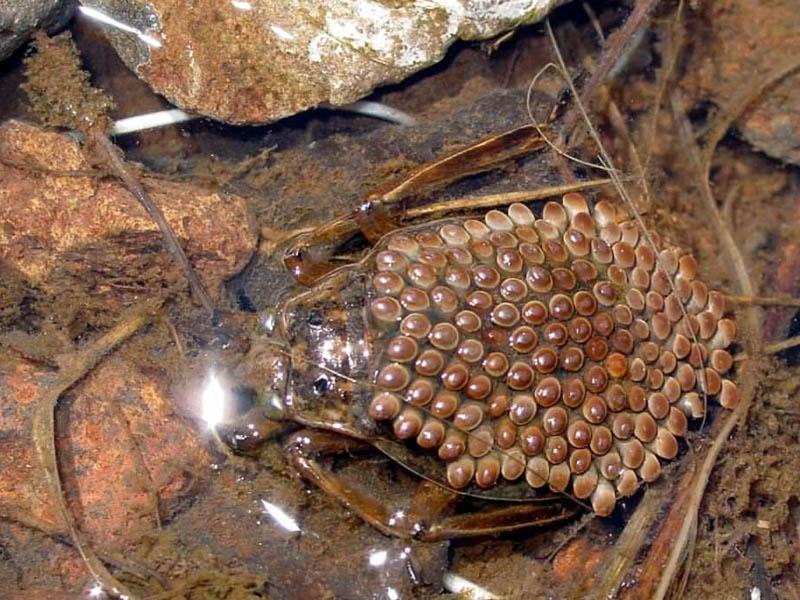
Common Plautus
This insect is of medium size - 1.5 cm. It is distinguished by its bright coloration - there are green and yellow hues on the brown shield. It is a predator insect, found everywhere except in Northern regions. But most species of these bugs live in the tropics. In contrast to their fellows that move little but hunt a lot (water scorpions, whitetails), the fin whale has excellent physical data - its body is streamlined, the structure of its limbs allows it to move quickly in water.
In addition, the bedbug is good at crawling under water on plants and can fly.
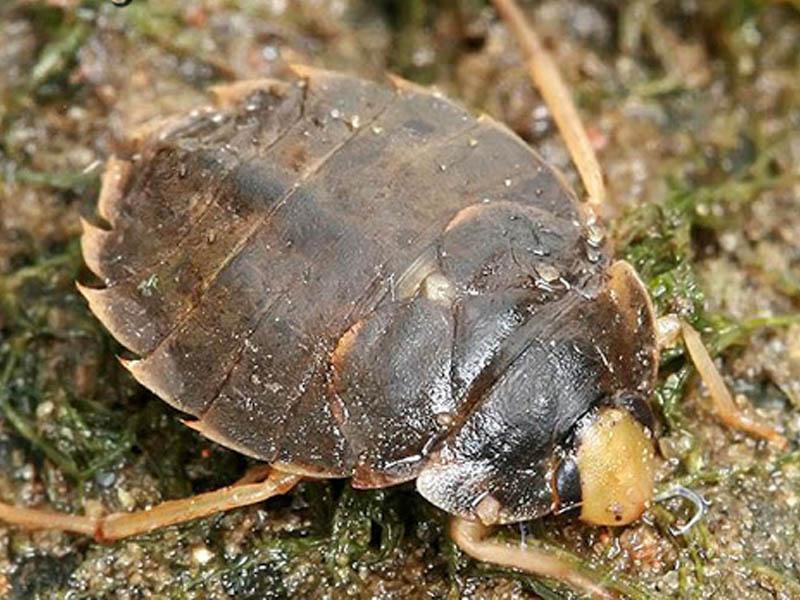
Useful Bedbugs
Such individuals do not harm crops, but destroy pests. Predators belong to this group for the most part. They destroy insects by injecting a substance that liquefies soft and hard tissues.
Arma the ravenous
It is a member of the Shieldworm family and its body length is 14 mm. The bug is characterized by its discreet coloration (brown). It has a flat body with a rigid shield. The insect damages the integrity of pests' outer coatings, injects a substance containing an enzyme, and then sucks their juices. It feeds mainly on caterpillars.
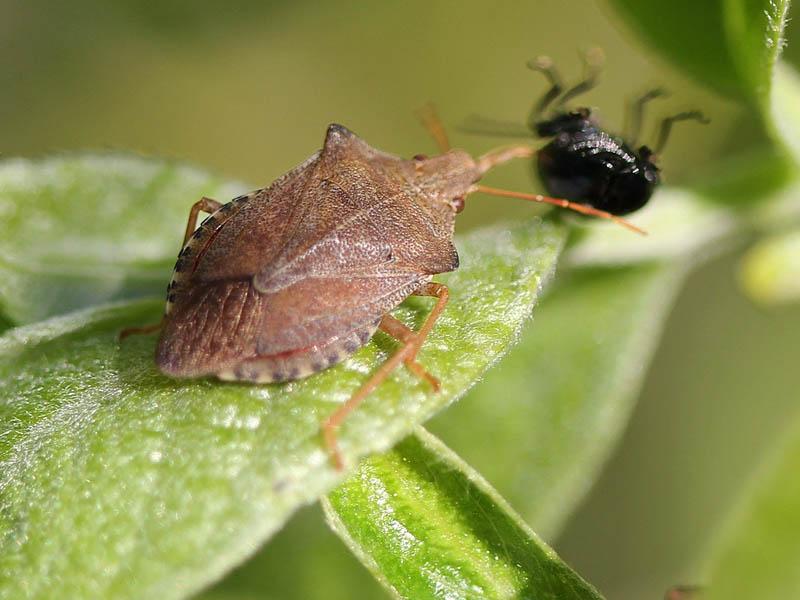
Zycrona blue
It is a small street bug. The body length is 5-8 mm and the coloration may vary, but there are always blue shades. The bug kills the offspring of the Colorado potato beetle as well as other pests, such as leaf beetles. It lives in trees but can also be found in grass.
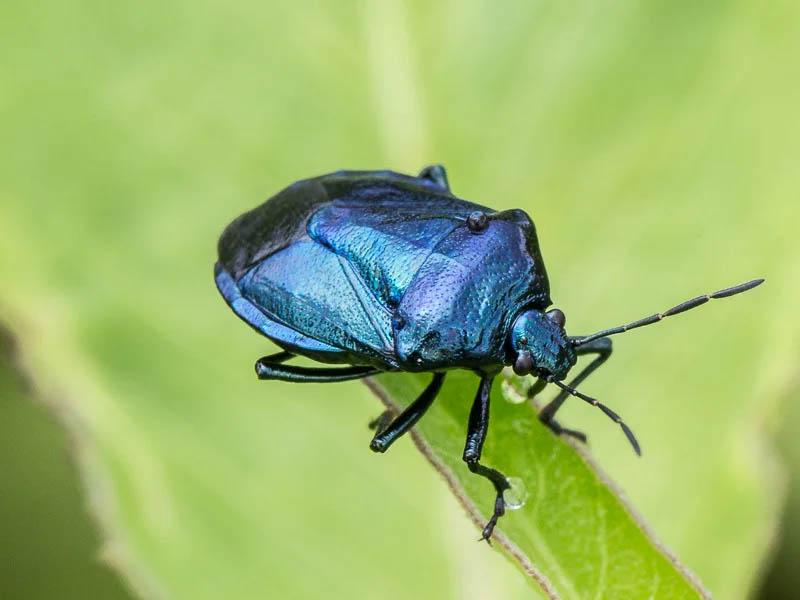
Perillus bioculatus
The insect is brightly colored (black back, red pattern). The body length is up to 12 mm. Some time ago, the habitat of the bedbug was much narrower - limited to the Nearctic. Today, however, insects of this group (of the Shieldworm family) can be found even in Europe. They feed on beetles (arthropods), mainly larvae.
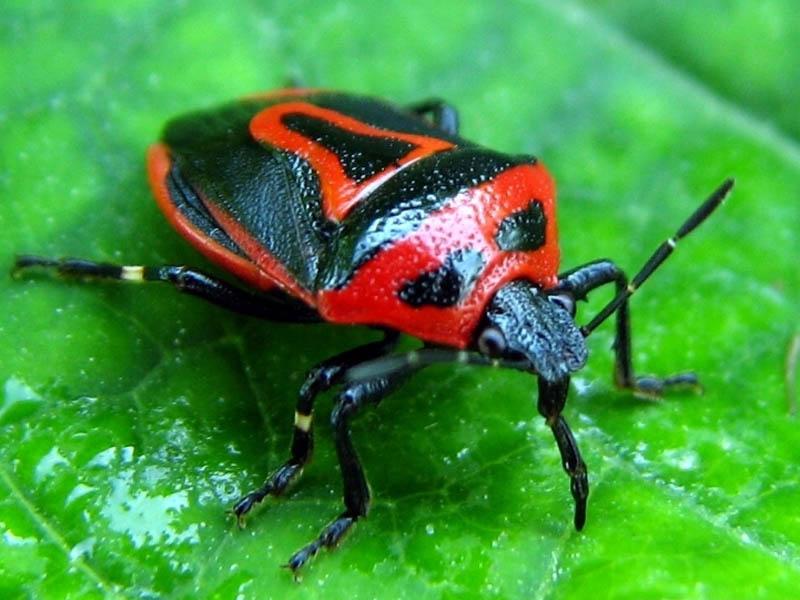
Video clip (video): wonderful varieties of bed bugs, how to recognize dangerous and pests
How to get rid of uninvited guests in the house. Types of chemicals to combat parasites
If you have blood-sucking insects in your home, you need to get rid of from them. These pests are exposed to chemicals called insecticides. The poison is delivered to the habitat in different ways:
- aerosols, are popular because of their high effectiveness, such preparations are sprayed over all surfaces (except woven products), the death of the pests comes in a few minutes/hours;
- Concentrated liquids - used to prepare a working solution, it is important to follow the recipe, you can not violate the ratio of insecticide and water, it can cause a decrease in effectiveness;
- crayons - applied to surfaces where insects are usually found: along baseboards, on the frame of furniture, the backs of cabinets, chests of drawers, pictures, photos;
- Powders have a disadvantage - the ability to treat only horizontal surfaces, in addition, preparations in this form do not allow full use of furniture, objects - everywhere the particles are spread;
- hot and cold fog - These are relatively new types of products, sprayed with special equipment, which release a fine mist that remains in the air for a long time;
- smoke bombs - the most toxic method, the principle of action and the structure of the released substance resembles a gas - insecticide particles are so small that they penetrate everywhere.
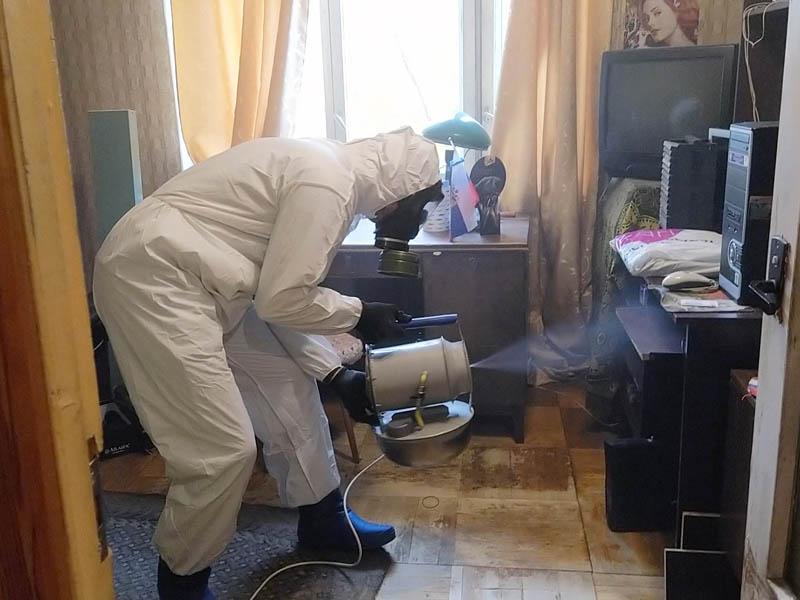
Expert tips

- Not all bloodsucking bugs prey on humans; some bite people for protection if they happen to be around;
- There may be different species of street bugs in the apartment, but only a few can survive there - members of the families that feed on ornamental plants.
Conclusion
Bedbugs - insects of the semiparasitic winged order. They differ in the presence of a shield, but the body length and coloration are different. Features of different insects:
- The most common specimens at home in humans are bedworms. They are characterized by their brown color and length - up to 8 mm, but there are different species of these insects, but all of them prefer to live near small animals.
- There are a lot of bed bugs in the wild. They don't destroy cultivated plants, but they help control pest populations.
- There are many more insects that destroy orchard crops, fruit trees, and reduce yields. There are also waterflies, these representatives of the species are the largest.
